CPSAC Members are reminded to log in for access to many more resources in our Technician Toolbox.
Canadian manufacturer websites, links to instruction manuals, and frequently asked questions are below.
Please verify the manual you are accessing is Canadian, and matches the seat you are using. When in doubt contact the manufacturer directly for support.
Please report broken links to [email protected].
Developed by Child Safety Link and branded by Parachute, the clear, easy-to-read, two-page fact sheets are available in for download.
Please report broken links to [email protected].
Please print and share but do not modify.
Provincial & Territorial Law Summary – A summary with links to all child passenger legislation across Canada. English / français
Used Seat Check List – A summary to help determine if a used seat is likely to be a safe used seat. Positive completion of this checklist does not guarantee a seat’s integrity. English / français
Tri-fold brochure with generic link to Find-A-Tech map English / français
- CPSAC members: reminder you may customize the tri-fold brochure with your contact information. Log in to access that version, and more, in the Technician Toolbox.
Recall list: https://www.cpsac.org/recall-list/
Please report broken links to [email protected].
Position statements
Call to action for Transport Canada and Health Canada
Last updated 23-Apr-2023 / view citations or download here in English / en français
Media release 26-Apr-2023 in English / Communiqué de presse 5 mai 2023 en français
The Child Passenger Safety Association of Canada (CPSAC) strongly urges Transport Canada and Health Canada to take action to keep dangerous child restraint products out of Canadian vehicles.
Why is a safe car seat important?
Motor vehicle collisions are the leading cause of fatal injury to children in Canada.1 When a safe child restraint (car seat, booster seat) is used properly, the risk of injury to a child in a collision is reduced by up to 82% and the risk of a child being killed is reduced by up to 71%.2 Car seats save lives. All car seats and booster seats sold in Canada must pass regulated testing under Canada’s Motor Vehicle Safety Act.3
The issue:
The Child Passenger Safety Association of Canada is aware of the alarming trend of unsafe, counterfeit seats becoming increasingly accessible to Canadian caregivers. There are a variety of unregulated, dangerous products available online on popular platforms, including online marketplaces and 3rd party sections of trusted Canadian retailers, as well as discounted direct-ship sites that are relatively new and growing in popularity. There is concern that caregivers that purchase these products are unaware that they do not meet Canadian safety standards and that their child will be at risk in a collision.
Although the importation, distribution, and sale of child restraints is regulated in Canada, these illegal products are making it across the border and showing up in Canadian vehicles. CPSAC has received reports from caregivers looking for assistance using these unsafe products, and recently two of our members in different provinces placed and received orders for counterfeit child restraints.
In recent years, products marketed as car seats were more easily distinguishable as unsafe, and Transport Canada issued a notice warning against their use4 as recently as November 2022; however, newer counterfeit models closely resemble regulated Canadian car seats and are harder for families to identify as fake.
Call to action:
CPSAC is calling for Transport Canada to issue a notice for each make and model of counterfeit seat sold to Canadian caregivers and warn caregivers of the dangers these products pose. The retailers selling these products must also be held accountable, by communicating to consumers the names of businesses responsible for selling unsafe products, directly or through marketplace partners.
It is imperative that Health Canada also addresses this threat to Canadian children by stopping the importation of hazardous products marketed to Canadian families and caregivers and holding retailers accountable for the importation and sale of illegal products to Canadians.
Transport Canada’s role:
Transport Canada develops and enforces the standards, regulations, and test methods for the manufacture and importation of car seats and booster seats in Canada.
The Motor Vehicle Safety Act requires any car seat manufactured for sale in Canada or imported into Canada be certified and clearly labeled with the National Safety Mark (NSM), indicating that it complies with all applicable Canadian standards in effect at the time of manufacture.5 A product sold as a car seat or booster seat without the NSM is not legal for sale or use in Canada.
Alerts and notices:
Transport Canada communicates safety-related issues about car seats and booster seats to consumers. Caregivers usually refer to notices and alerts as recalls; a recall may be issued if a Canadian seat does not comply with safety standards or if there is a safety or usage issue;6 however, a recall only applies to seats from legitimate manufacturers of car seats and booster seats for the Canadian market. In some cases where there is a more general concern, Transport Canada issues a Consumer Information Notice. CPSAC strongly urges Transport Canada to expand the scope of the November 2022 notice on this issue.
Health Canada’s role:
Health Canada’s Canada Consumer Product Safety Act (CCPSA) regulates the importation and sale of many items, including cosmetics, toys, and other consumer goods, including car seats and booster seats. Its purpose is to protect the public by addressing and preventing dangers to human health or safety that are posed by consumer products in Canada.7
The Act makes it illegal to manufacture, import into Canada, advertise, or sell a consumer product that does not comply with the requirements of the regulations that apply to them. In the case of car seats and booster seats, this means that, in order to be sold, given, or loaned, they must meet specific criteria in the Motor Vehicle Restraint Systems and Booster Seats Safety Regulations (RSSR).7
Caregivers and consumer action:
If a caregiver owns a counterfeit car seat or booster seat, we urge them to stop using it immediately.
The use of a product masquerading as a car seat or booster seat to transport a child in a vehicle would violate provincial and territorial highway laws and, most importantly, threaten the child’s life and safety in a crash.
Until this issue has been addressed, caregivers shopping for a new car seat or booster seat online should take care to purchase only from the Canadian storefront of reputable, trusted retailers. Inspect new car seats and booster seats purchased online to ensure there is a National Safety Mark (NSM)5 present — a round sticker with a maple leaf — and report unsafe products to Health Canada via their online Consumer Incident Reporting Form.
- UPDATED Dec 2020: Recommendations for revisions to Nova Scotia’s Traffic Safety Act / see June 2018 submission here
- Recommendations for revisions to New Brunswick’s Regulation under the Motor Vehicle Act
Recommendations for car seat, booster seat, and seat belt use by child passengers in taxis and ride-share vehicles
Last updated 24-Apr-2023 / view citations or download here in English / télécharger en français
Motor vehicle collisions are a leading cause of death and injury to children in Canada. When child restraints (car seats, booster seats, seat belts) are used properly, the risk of a child being injured or killed is reduced by up to 71%.
Both the World Health Organization (WHO) and the Canadian Council of Motor Transport Administrators (CCMTA) recommend that jurisdictions aim to achieve a minimum seat belt usage rate of 95 percent (including child restraints), and jurisdictions eliminate any remaining exemptions in seat belt and child restraint laws.
In all provinces and territories in Canada, the driver of the vehicle has the legal obligation to ensure child passengers are safely buckled in the appropriate car seat, booster seat, or seat belt in passenger vehicles including cars, trucks, vans, and SUVs.
The risk of a child being hurt or killed in a passenger vehicle in use as a taxi or ride-share vehicle (Uber, Lyft, etc.) is the same as in any other passenger vehicle. The legal obligation to buckle child passengers in taxis and ride-share vehicles varies by province and territory.
Caregivers should always properly use an appropriate car seat, booster seat, or seat belt when traveling in a taxi or ride-share vehicle, regardless of who is legally responsible to do so.
The following table outlines the legal obligation of the driver of a taxi or a ride-share vehicle, according to the laws of each province and territory.
E (exempt or excepted): The driver is exempt or excepted from the legal responsibility for ensuring the proper use of child restraints (car seats, booster seats, seat belts) for child passengers, or the relevant section in the legislation does not apply to the driver of this vehicle.
R (required or responsible): The driver is legally responsible for ensuring the proper use of child restraints (car seats, booster seats and seat belts) for child passengers.
Tip: if you are viewing this on a phone turn your device sideways to more easily view the table.
Province / Territory |
Taxi driver |
Ride-share driver |
|---|---|---|
| Alberta | E | R |
| British Columbia | E | R |
| Manitoba | E | E |
| New Brunswick | E | E |
| Newfoundland & Labrador | R | R |
| Northwest Territories | E | R |
| Nova Scotia | E | E |
| Nunavut | E | R |
| Ontario | E R when used for school transportation. |
R* *E if the municipality in which the ride-share driver is licensed has a bylaw that licenses and classifies the vehicle as a taxi. |
| Prince Edward Island | E | E |
| Québec | Driver is exempt; the adult accompanying the child passenger is legally obligated to ensure correct child restraint use. | Driver is exempt; the adult accompanying the child passenger is legally obligated to ensure correct child restraint use. |
| Saskatchewan | Driver is exempt; the adult accompanying the child passenger is legally obligated to ensure correct child restraint use. | Driver is exempt; the adult accompanying the child passenger is legally obligated to ensure correct child restraint use. |
| Yukon | E | R |
Caregivers should always properly use an appropriate car seat, booster seat, or seat belt when traveling in a taxi or ride-share vehicle, regardless of who is legally responsible to do so.
- CPS Resources for Hockey Families summary document


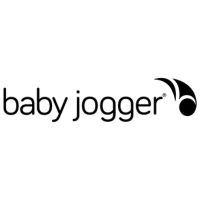

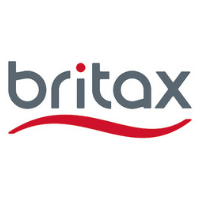



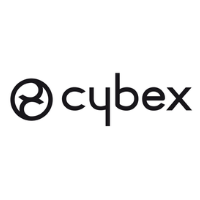


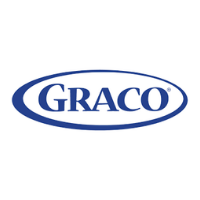




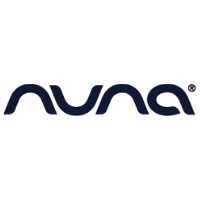

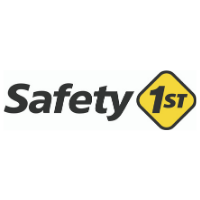

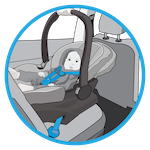 rear-facing only (infant) seats
rear-facing only (infant) seats rear-facing seats
rear-facing seats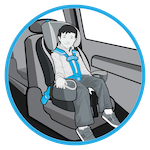
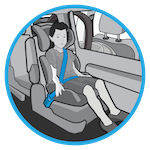
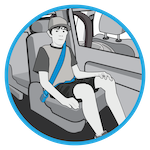 seat belts
seat belts